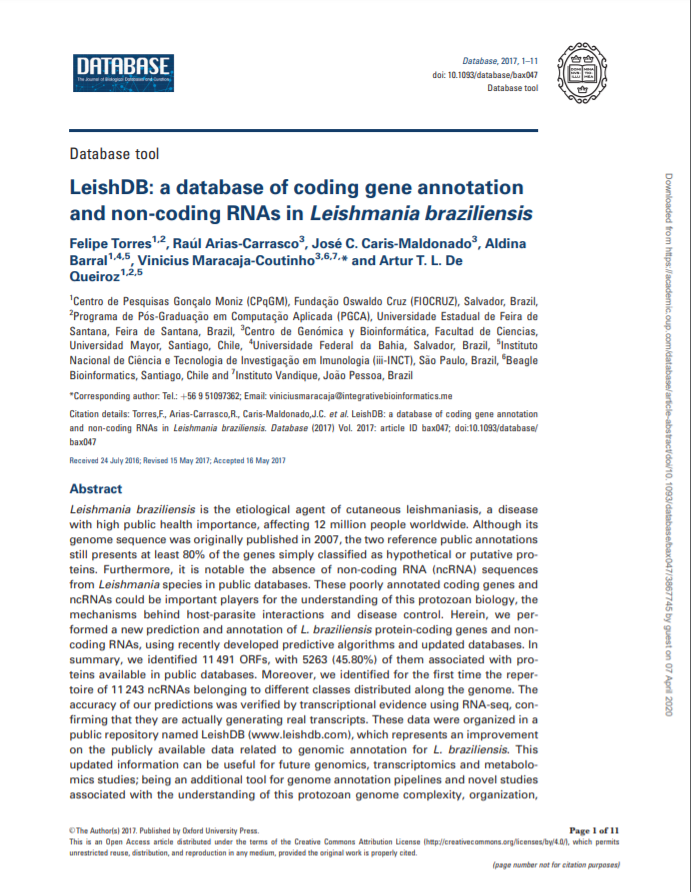LeishDB: a database of coding gene annotation and non-coding RNAs in Leishmania braziliensis

Fecha
2017Autor
Torres F., Barral A., De Queiroz A.T.L.
Arias-Carrasco, Raúl [Centro de Genómica y Bioinformatica, Facultad de Ciencias, Universidad Mayor, Chile]
Caris-Maldonado, José C. [Centro de Genómica y Bioinformatica, Facultad de Ciencias, Universidad Mayor, Chile]
Maracaja-Coutinho, Vinicius [Centro de Genómica y Bioinformatica, Facultad de Ciencias, Universidad Mayor, Chile]
Ubicación geográfica
Notas
HERRAMIENTAS
Acceda a títulos restringidos
¿Cómo descargar?Resumen
Leishmania braziliensis is the etiological agent of cutaneous leishmaniasis, a disease with high public health importance, affecting 12 million people worldwide. Although its genome sequence was originally published in 2007, the two reference public annotations still presents at least 80% of the genes simply classified as hypothetical or putative proteins. Furthermore, it is notable the absence of non-coding RNA (ncRNA) sequences from Leishmania species in public databases. These poorly annotated coding genes and ncRNAs could be important players for the understanding of this protozoan biology, the mechanisms behind host-parasite interactions and disease control. Herein, we performed a new prediction and annotation of L. braziliensis protein-coding genes and non-coding RNAs, using recently developed predictive algorithms and updated databases. In summary, we identified 11 491 ORFs, with 5263 (45.80%) of them associated with proteins available in public databases. Moreover, we identified for the first time the repertoire of 11 243 ncRNAs belonging to different classes distributed along the genome. The accuracy of our predictions was verified by transcriptional evidence using RNA-seq, confirming that they are actually generating real transcripts. These data were organized in a public repository named LeishDB (www.leishdb.com), which represents an improvement on the publicly available data related to genomic annotation for L. braziliensis. This updated information can be useful for future genomics, transcriptomics and metabolomics studies; being an additional tool for genome annotation pipelines and novel studies associated with the understanding of this protozoan genome complexity, organization, biology, and development of innovative methodologies for disease control and diagnostics.
URI
https://academic.oup.com/database/article/doi/10.1093/database/bax047/3867745https://dx.doi.org/10.1093%2Fdatabase%2Fbax047
https://www.ncbi.nlm.nih.gov/pmc/articles/PMC5502370/pdf/bax047.pdf
http://repositorio.umayor.cl/xmlui/handle/sibum/6886
Coleccion/es a la/s que pertenece:
Si usted es autor(a) de este documento y NO desea que su publicación tenga acceso público en este repositorio, por favor complete el formulario aquí.